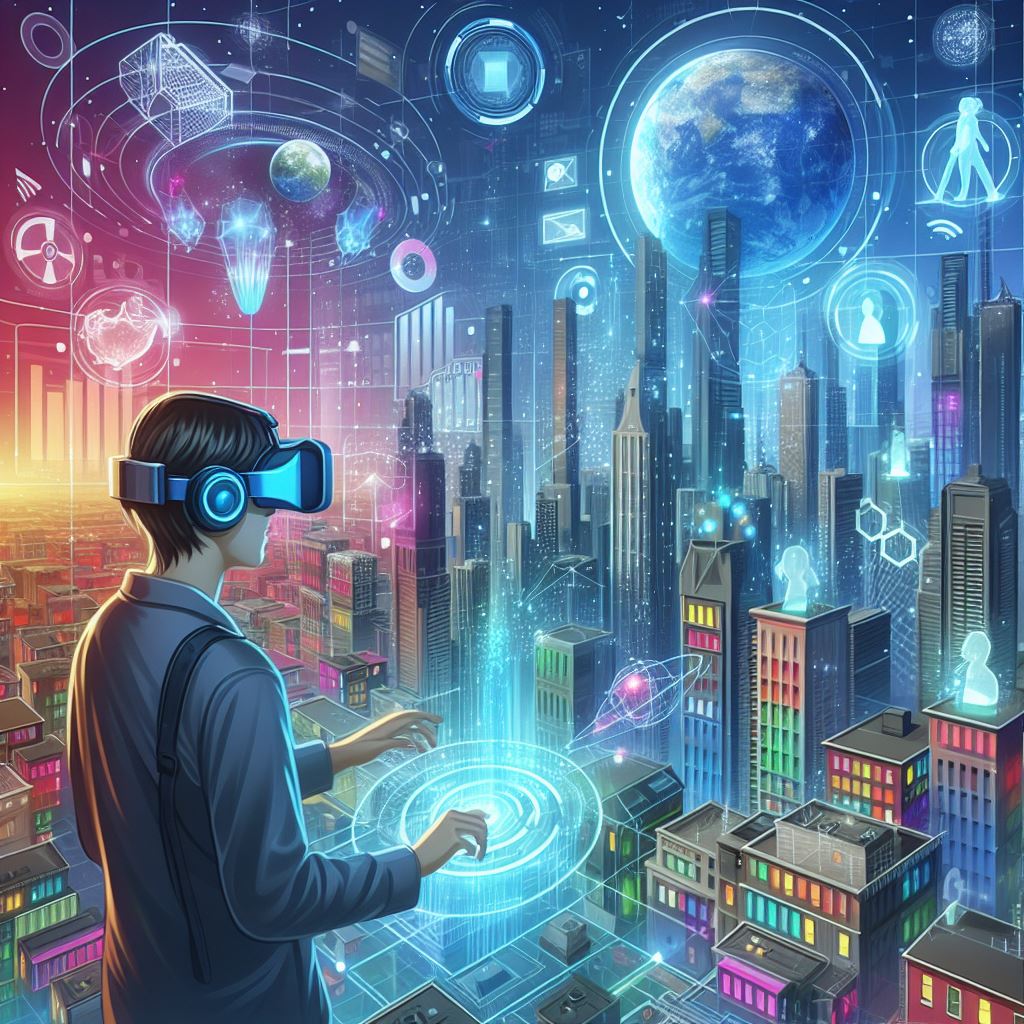Extended Reality (XR) — encompassing Virtual Reality (VR), Augmented Reality (AR), and Mixed Reality (MR) — is poised to revolutionize a multitude of industries. As these technologies evolve, they are shaping new ways to interact with digital content, blending seamlessly with our physical surroundings. Explores the future of the XR market, focusing on the driving forces behind its growth, emerging trends, and anticipated innovations that will redefine the industry landscape.
Extended Reality (XR), encompassing Virtual Reality (VR), Augmented Reality (AR), and Mixed Reality (MR), is evolving rapidly, driven by technological advancements and expanding applications across various sectors. As XR technologies continue to mature, several emerging trends are reshaping the landscape, offering new opportunities and setting the stage for future growth. This in-depth analysis explores these trends and their implications for the XR industry.
Extended Reality (XR) Industry Growth
The extended reality industry is projected to reach USD 111.5 billion by 2028 from USD 40.1 billion in 2023, at a CAGR of 22.7% from 2023 to 2028. The major factors driving the growth of the extended reality market include availability of affordable VR devices, increasing demand for extended reality in entertainment and gaming industry, and the surging adoption of extended reality in healthcare sector.
Download PDF Brochure @
https://www.marketsandmarkets.com/pdfdownloadNew.asp?id=147143592

Emerging Trends in Extended Reality (XR)
Extended Reality (XR), which includes Virtual Reality (VR), Augmented Reality (AR), and Mixed Reality (MR), is rapidly evolving and transforming various industries. Key trends in XR are enhancing the immersive experience for users. Advances in haptic feedback technology are making virtual interactions feel more tangible by simulating textures and sensations. Spatial audio is providing a 360-degree soundscape, improving the realism of VR environments. Additionally, high-resolution displays are reducing visual distortions and offering clearer, more vibrant visuals, making virtual experiences more engaging and lifelike.
Artificial Intelligence (AI) is increasingly integrated into XR, driving innovation in content creation and personalization. AI tools are automating the development of 3D models and simulations, reducing the time and expertise required for high-quality content creation. AI also enables more personalized XR experiences by analyzing user behavior to tailor interactions and content to individual preferences. Furthermore, Natural Language Processing (NLP) is enhancing user interactions with XR systems by allowing natural language commands and responses, making these technologies more intuitive and user-friendly.
The future of XR also includes significant developments in remote collaboration and lightweight, wireless devices. Virtual workspaces and remote training simulations are becoming more common, allowing teams to collaborate and learn effectively from different locations. Standalone VR headsets and wireless AR glasses are addressing user needs for convenience and mobility, offering more seamless and accessible XR experiences. As XR technologies continue to advance, they will further redefine how we interact with both digital and physical environments, creating new opportunities for innovation across multiple sectors.
Expanding Industry Applications
XR technologies are being adopted across a wide range of industries, driving market growth:
- Healthcare: XR is revolutionizing medical training, patient treatment, and surgical planning. VR is used for pain management and exposure therapy, while AR assists in complex surgical procedures and patient education.
- Education and Training: XR offers interactive and engaging learning experiences, from virtual classrooms to realistic simulations for vocational training. This enhances educational outcomes and skills development.
- Retail and E-Commerce: AR is transforming the shopping experience by allowing customers to visualize products in their own space before making a purchase. Virtual fitting rooms and interactive product displays are becoming more prevalent.
- Real Estate and Architecture: XR is used for virtual property tours and architectural visualizations. Clients and stakeholders can explore spaces and designs before they are built, improving decision-making and planning.
Growing Investment and Funding
The XR market is attracting significant investment from venture capitalists, technology companies, and government initiatives. Funding is accelerating the development of new XR technologies and applications, fostering innovation and expanding market opportunities. Major technology firms are investing heavily in XR research and development, contributing to the industry’s growth
Future Outlook
The extended reality market is set to experience robust growth, driven by technological advancements, expanding industry applications, and increasing investment. XR technologies will continue to transform various sectors, offering new opportunities for engagement, interaction, and innovation. As the industry evolves, ongoing research and development will play a critical role in shaping the future of XR, making it an exciting and transformative field with boundless potential.
Frequently Asked Questions :
What is extended reality (XR)?
Extended reality (XR) is an umbrella term that encompasses virtual reality (VR), augmented reality (AR), and mixed reality (MR). XR technologies create immersive digital experiences that blend the physical and virtual worlds, allowing users to interact with digital content in real-time.
How are technological advancements influencing extended reality (XR) ?
Technological advancements, such as improved graphics rendering, processing power, and sensor technologies, are making XR applications more immersive and realistic. These innovations are leading to the development of lighter, more comfortable, and affordable XR devices that are more accessible to consumers.
What role does 5G play in the extended reality (XR) market?
The rollout of 5G networks is crucial for the XR market as it provides significantly reduced latency and increased bandwidth. This enables real-time, high-quality content delivery, which is essential for creating immersive XR experiences. Additionally, edge computing enhances performance by processing data closer to the user.
How can businesses leverage extended reality (XR) technologies?
Businesses can leverage XR technologies to enhance training, improve customer engagement, and streamline operations. By adopting XR solutions, companies can create immersive experiences that drive innovation and improve outcomes in their respective industries.
